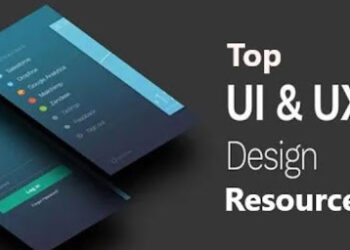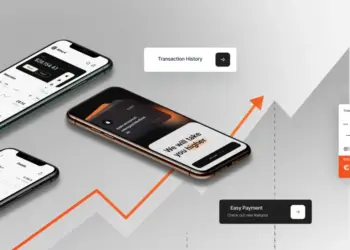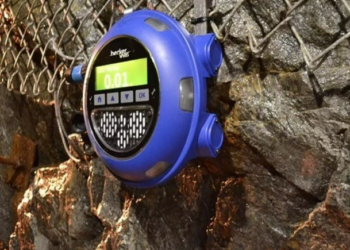As artificial intelligence continues to evolve rapidly, developers and organizations are increasingly turning to advanced language models and APIs to power intelligent applications. Two notable players in this space are Grok 3, developed by xAI (Elon Musk’s AI venture), and O3, a model from OpenAI’s third-generation architecture. Both platforms promise cutting-edge performance, but how do they truly compare? In this article, we’ll examine Grok 3 vs O3 in terms of performance, capabilities, and real-world use cases, while also diving into the utility of the Grok 3 API and O3 API.
Performance Overview
Grok 3 Performance
Grok 3 is the latest iteration of xAI’s large language model (LLM), engineered for high responsiveness and real-time data integration. Built to rival ChatGPT and other LLMs, Grok 3 shows significant improvements over its predecessor in speed, context handling, and inferencing. Grok 3 leverages real-time data from X (formerly Twitter), giving it a notable edge in staying current.
In benchmarks, Grok 3 reportedly matches or exceeds GPT-4-turbo in conversational performance, particularly in current events, code generation, and humor-driven responses. However, Grok 3 may show some inconsistency in abstract reasoning or niche technical queries, depending on prompt construction.
The Grok 3 API is optimized for streaming responses and is well-suited for applications requiring real-time interactivity, such as chatbots, social media monitors, or live customer support agents.
O3 Performance
OpenAI’s O3 model, part of the GPT-4.5+ family, represents the pinnacle of refined transformer architecture. It delivers extremely high accuracy in reasoning, summarization, multilingual understanding, and coding. The O3 model shows a marked increase in reliability and fewer hallucinations compared to earlier versions.
One of O3’s standout features is its multimodal capability, integrating text, image, and even voice input (via ChatGPT voice). In real-world testing, O3 consistently outperforms most other models in standardized academic and logic tasks, showcasing its robustness.
The O3 API provides developers access to this powerful model with support for long-context input (up to 128K tokens) and advanced control features, including tool calling, system instructions, and dynamic memory handling.
Capabilities Comparison
Natural Language Understanding and Generation
Both Grok 3 and O3 excel at text generation, summarization, and dialogue, but with subtle differences.
· Grok 3 leans toward informal, conversational tones, often echoing the humor and style prevalent on X. It’s adept at producing responses that feel “human-like” and relatable.
· O3, in contrast, emphasizes precision and depth. It excels in technical documentation, legal text generation, and academic writing.
Real-Time Data Integration
One of Grok 3’s most distinctive advantages is its real-time web integration. Using live data streams, particularly from X, Grok 3 API can provide responses based on current trending topics, making it ideal for news apps, market sentiment analysis tools, and influencer trackers.
O3, while not inherently connected to real-time sources, can be augmented via plugin tools and API calls. However, it requires explicit tool use or memory augmentation, making O3 API slightly less “live” out of the box compared to Grok 3.
Tool Use and Agentic Behavior
Both platforms support tool use, allowing the AI to call APIs, use web browsers, run code, or interface with databases.
· The O3 API features robust tool-calling with fine-grained system control and chain-of-thought reasoning, making it especially strong for agent-based frameworks like AutoGPT or LangChain.
· The Grok 3 API supports similar agentic behavior, but currently lacks the extensive developer ecosystem and open tooling that OpenAI has cultivated. Still, Grok 3’s tight integration with X makes it an appealing choice for social-driven agents.
Image and Multimodal Support
O3 stands out with its multimodal support. Through the O3 API, developers can analyze images, extract text, generate captions, and perform visual reasoning. This makes O3 a favorite for applications in education, accessibility, medical imaging, and design.
Grok 3, while exploring multimodal capabilities, is still primarily text-based. The Grok 3 API currently doesn’t match the image-processing depth found in the O3 API, though future updates may bridge that gap.
Real-World Use Cases
Use Case 1: Social Media Monitoring
For social listening platforms, sentiment analysis, and influencer tracking, Grok 3 shines due to its real-time connection to X. A brand reputation tool using the Grok 3 API can instantly surface emerging trends or crises, giving companies a competitive advantage in PR management.
While the O3 API could be used here, it would require custom feeds or integrations to stay up-to-date, increasing complexity.
Use Case 2: AI Customer Service Agents
In customer support scenarios, both models are viable. Grok 3 offers fast, personality-rich interactions that can mirror a brand’s voice. This makes the Grok 3 API ideal for friendly, informal support bots.
Conversely, the O3 API is more suited to industries where accuracy and compliance are paramount—like banking, healthcare, or legal services. It ensures clarity, auditability, and controlled information flows.
Use Case 3: Education and Tutoring
The O3 API is exceptionally well-suited for educational tools. It can explain complex topics, generate interactive quizzes, and even analyze diagrams and code. Language learning apps and math tutors can leverage O3’s depth and consistency.
Grok 3, while competent in education, is often better at keeping students engaged through humor and natural dialogue. It’s a strong contender for gamified or informal learning platforms.
Use Case 4: Code Generation and Debugging
Both APIs support code generation, but the O3 API currently has the edge in consistency, testability, and advanced programming concepts. It handles multiple languages and frameworks and can reason through entire software workflows.
The Grok 3 API offers competitive code support, especially for rapid prototyping or projects that intersect with social APIs, but may occasionally require more specific prompts to avoid ambiguity.
Developer Ecosystem and Access
Grok 3 API
The Grok 3 API is currently more limited in availability, as xAI rolls it out via X Premium tiers. While it promises full developer access in the future, early adopters may face restrictions in scope and customization.
Documentation is improving, and the team is actively engaging with the developer community to expand use cases. Grok 3 is expected to gain broader tooling over time.
O3 API
The O3 API is available through OpenAI’s ChatGPT and API platforms. It features rich documentation, SDKs, integration guides, and third-party support via platforms like Zapier, LangChain, and Replit. This makes it easier for teams to prototype and deploy advanced solutions rapidly.
Conclusion: Grok 3 or O3?
When comparing Grok 3 vs O3, the right choice depends on your priorities:
· Choose Grok 3 and the Grok 3 API if you need real-time data, a conversational tone, and integration with social platforms.
· Choose O3 and the O3 API for advanced reasoning, multimodal capabilities, and strong developer tooling.
Both platforms are powerful, and in many cases, hybrid solutions using both Grok 3 API and O3 API may offer the best of both worlds. As the AI landscape evolves, staying flexible and responsive to each platform’s strengths will be key to building the next generation of intelligent applications.















